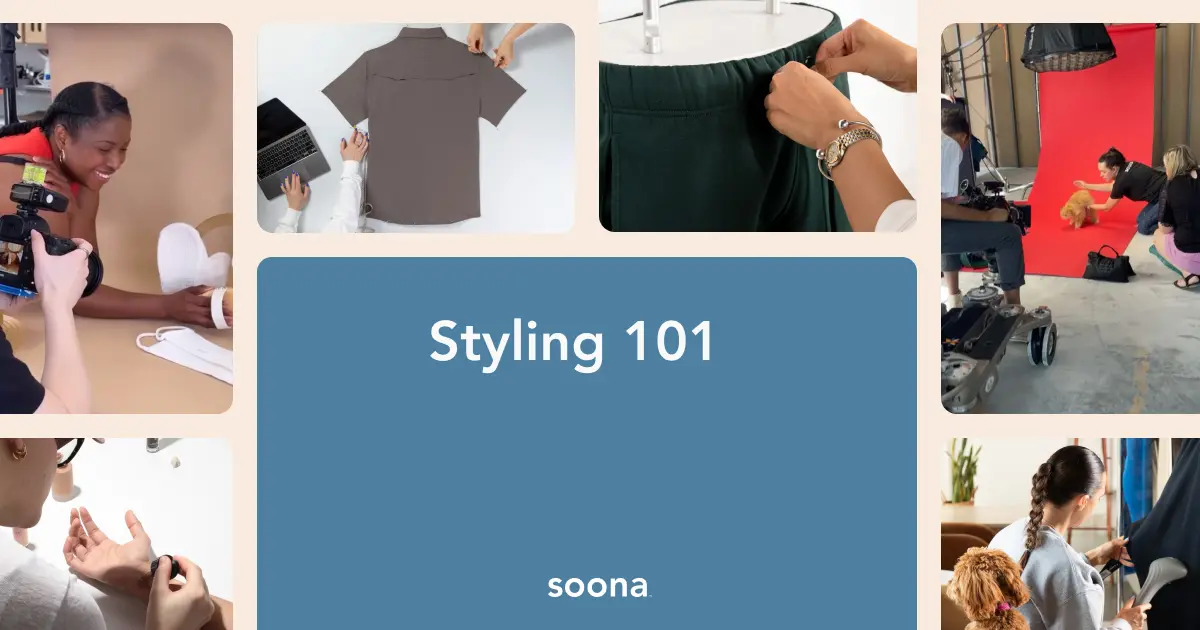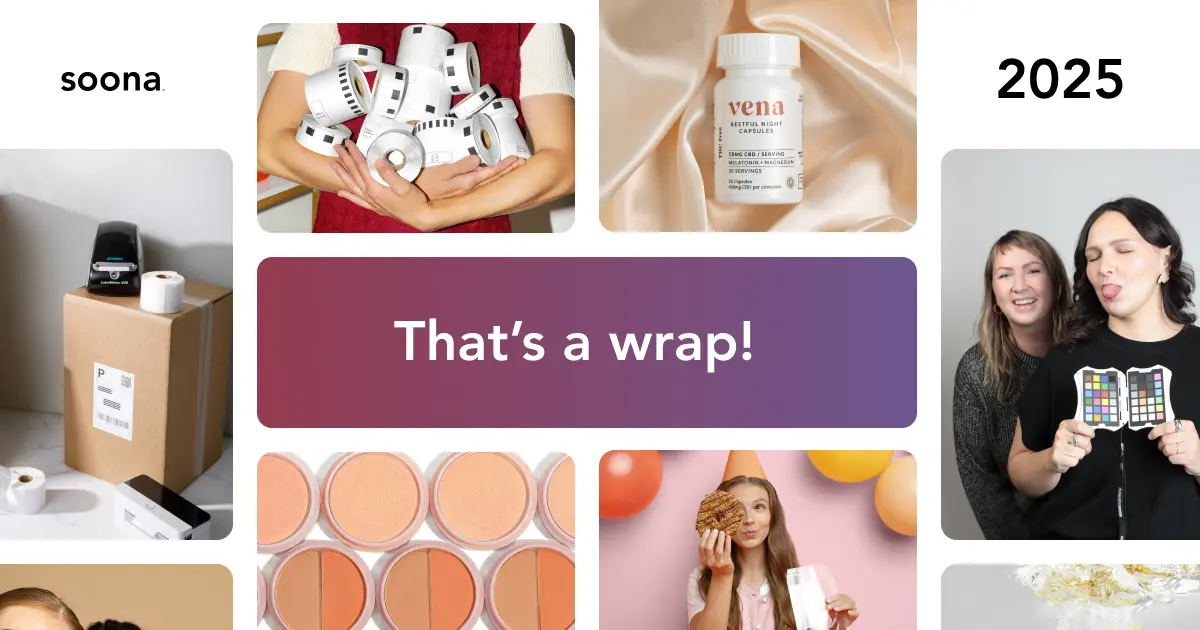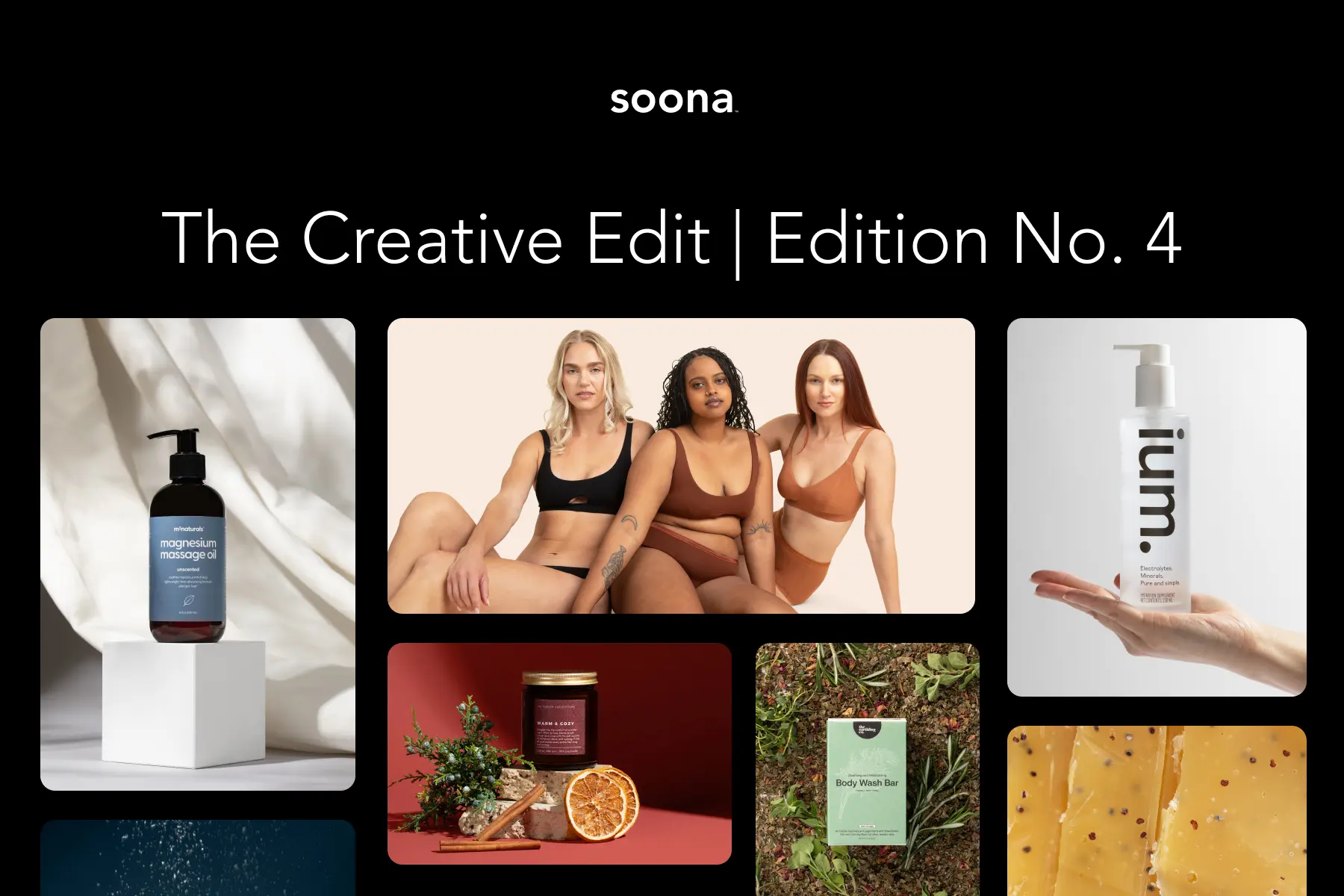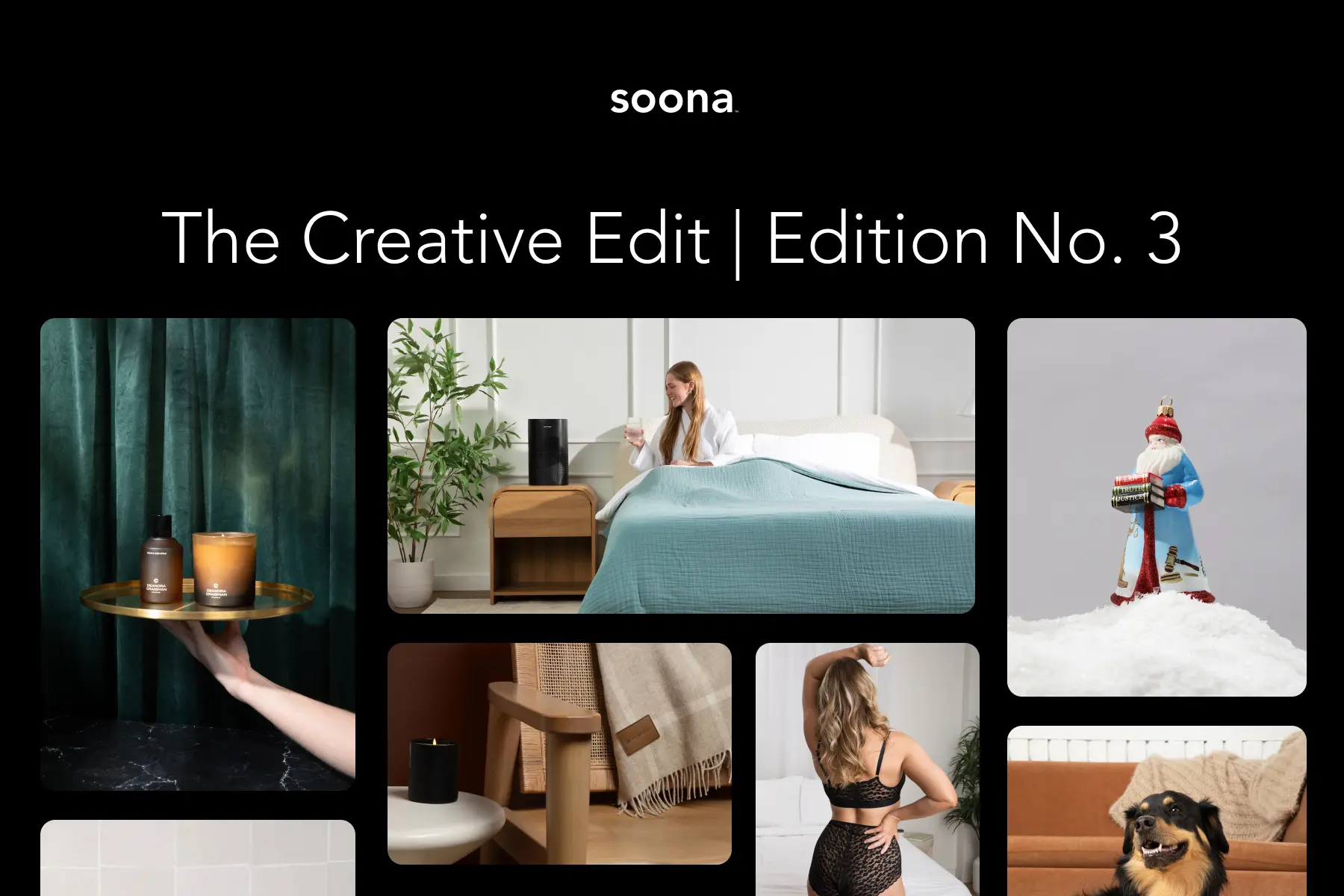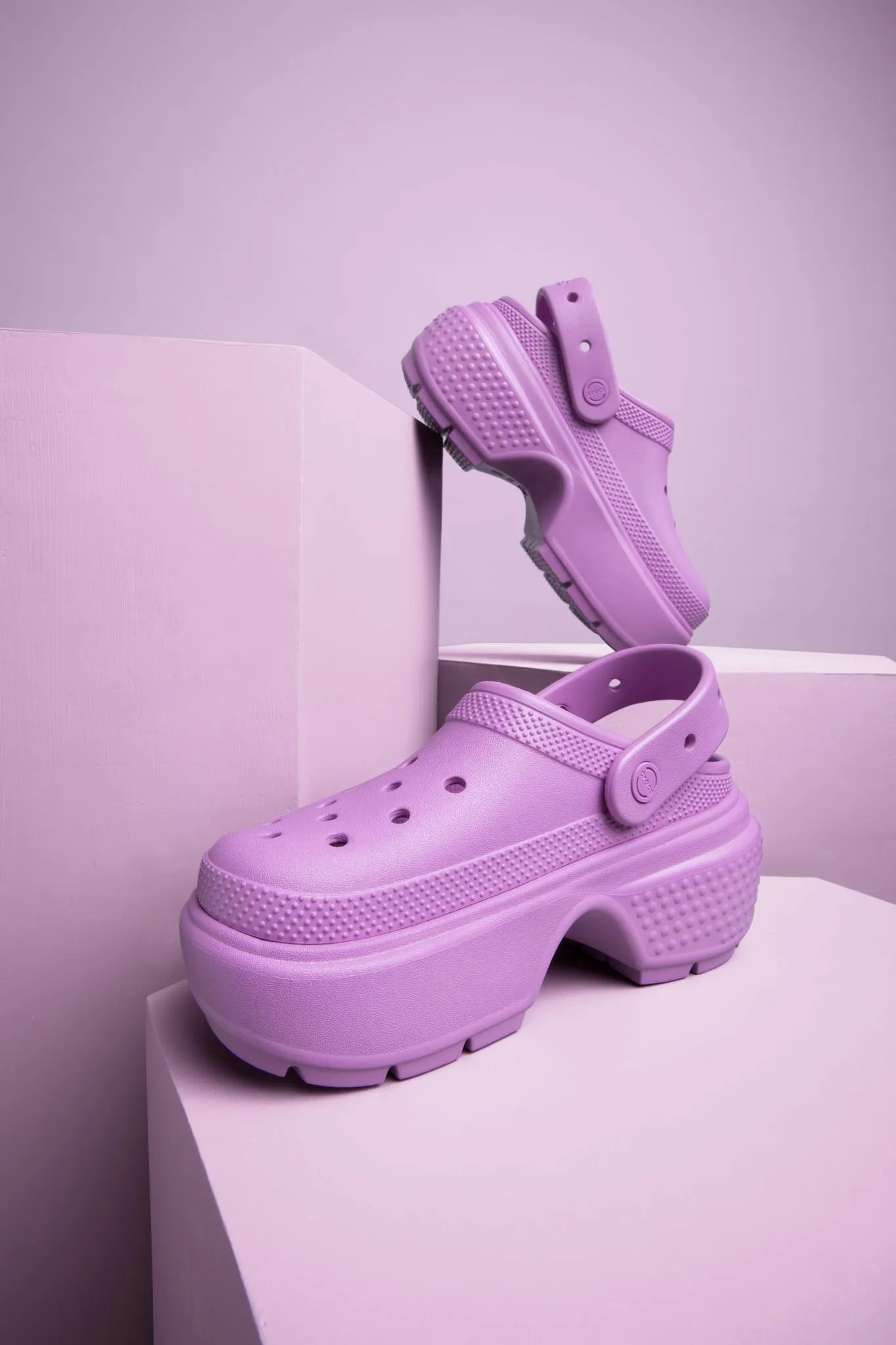When it comes to food photography, the lens should capture more than just what it looks like. You want to shoot these images in a way that teases the flavors in the item, be it a dish at a restaurant or a bottled sauce for sale at the grocery store.
Beyond the simple act of documenting your food products, good food photography is a creative endeavor that demands a keen eye for composition, lighting, and styling.
From the play of natural light on a perfectly plated dish to the intricate details of food styling and the choice of the right camera gear—let’s go over the top food photography tips to keep in mind, and ideas and props to inspire your own shots.
7 food photography tips for mouth-watering product images
Before we get into the thick of it, let’s consider some food photography best practices to keep in mind.
Start with a shot list
First thing’s first! Before you do any photoshoot, it’s a good idea to create a shot list—whether you DIY your photo shoot or end up hiring a studio (like soona!) A shot list is essentially a list of images you’d like to capture during the shoot.
This list should be comprehensive: How many shots do you want with a hand model? How many from a bird-eye view? How many close-ups? For each food item you want to photograph, you’ll probably want multiple angles or settings as well. Organize your shot list as thoroughly as you can so—come shoot day—the process is smooth and easy.
Use the right camera settings
Technically speaking, you don’t need a bunch of expensive equipment or fancy camera—you can shoot great photos with a smartphone. This approach works great if you're on a tight budget. If this is the route for you, try portrait mode to capture sharper detail.
If you have more flexibility with your budget, DSLR cameras work best—or a pro studio with their own DSLR camera—and use settings that allow for detailed close-ups as well as wide shots of an entire table. You can also find an inexpensive lens to achieve your food photos.
{{studio-ad}}
Keep an eye on photography style
Styling can easily get messy with food photography. Even if you want the photo to look messy, it’s important that the food always looks appetizing—it's the main subject after all. So while you’re having fun setting up your food for the shoot, make sure you also have ample space between plates, neatly placed and clean silverware, and no unwanted splatters. You’ll also want to avoid wrinkles in your background.
Notice how, in the image below, the tacos are fairly evenly spaced, the tablecloth is wrinkle-free, and the props complement rather than compete with the products.

Know utensil etiquette
The utensils you use in your shoot should obviously pertain to the food you’re photographing. whether it’s silverware or chopsticks, familiarize yourself with etiquette.
For example, crossing chopsticks is considered bad manners and—sometimes—even a bad omen. When it comes to silverware, it depends on how many utensils you’re using according to the dish you’re serving. Regardless of the amount, forks go on the left, knives and spoons on the right, and the sharp side of the knife should always face the plate.
Maybe these rules seem arbitrary. but to people familiar with utensil etiquette, an error here can be a major distraction.
Add relevant props
Props make a huge impact on product photos. They can add visual interest and help tell the story you want to tell. It’s important to make shoppers feel like your food belongs on their own table or that they belong at your table. Either way, the color and style you incorporate in your props can speak volumes about your brand or product.

Here are a few visually interesting props to consider.
- Coffee mug
- Newspaper
- Butcher block
- Sprig of herbs
- Salt and pepper shakers
- Fresh fruit
- Hand model
✨ A note on hand models: Make sure your hand model’s nails are neat and clean—especially when it comes to food!

Stay true to your brand
Your brand identity encompasses the values your brand represents, and you convey this identity largely through words and visuals—including product shots. It's critical you remain consistently true to those values with each and every product photo, regardless of if it’s for Amazon or Instagram.

It’s your job to ensure your customer can scroll through your website or social media feed and feel immersed in the brand you’ve created. If your brand has fun colors and puns, you want to make food images pop on channels like Instagram, not diluted or bland. Inconsistency weakens your brand identity—and could easily be avoided with some brand guidance.

One really great way to make sure you and your photography team stay in sync is to create a brand kit or a mood board. These are tools—either virtual or IRL—you can refer to for color inspiration, interesting textures, prop ideas, and styling direction. Your visual brand kit will dictate which colors best fit your own style.
Use a tripod
Stabilizing your camera on a tripod helps ensure consistency for all your food photos. It helps avoid camera shake and to maintain the same lighting and positioning. And you can get tripods relatively affordably, so it’s a necessary investment for every product photography toolkit.
The example below was shot using a tripod. You can see how the consistency lends itself to other content formats, like an animated GIF.

Your food & bev photos should look as good as they taste >
How to prep your food product shoot
Preparing for shoot day? Let’s take a look at which considerations you need to take to make sure you get the food photos the business needs.
Layout
Laying out your food to photograph it on a plate or platter is also known as “plating.” This term is often used for the presentation of food in high-end restaurants. But maybe you’ve got a casual snack food, a quirky food truck, or a vegan matcha shop. The way you plate your food products is just as important as a 5-star restaurant.

You want your product to be front and center, but you can also use surrounding objects to suggest complementary flavors or make a statement about your brand identity. In the photo above, the product is queso, and the surrounding chips, limes, and plated meals show context and ideas on how to use the product.
Here are some other ideas:
- Include a pair of hiking boots or climbing rope in the background when shooting a granola bar for your outdoorsy brand
- Use bamboo straws and a minimalist background to convey sustainability
- Arrange food in a pattern for engaging flat lay shots

Lighting tips
Studio lighting can work, but it’s often difficult to figure out the technicalities if you’re not a photography expert. This is especially true for food photos. Don’t be afraid to play around with angles and quantity of studio lights to minimize unsightly reflections and maximize visual interest. One thing to look out for is harsh shadows caused by artificial light. Make sure you check out your test shots carefully.
A professional food photographer might consider window light the best for taking food photographs. And it’s perfect if you don’t have the budget or setup for artificial lighting. Make sure you know where your best natural light source is and what time it occurs. It’s great to use indirect sunlight instead of direct sunlight because it’s less harsh. Natural light is free and often flattering. But it’s also fleeting!

Use natural light in your shooting space and see how the light works at different times of day. Do some test shots to ensure you know when you have enough light to achieve your desired shot. Staging your shoot in the right spot beforehand will help you optimize the amount of time you have to snap photos with the best natural lighting.
Get crafty
The actual food you photograph doesn’t necessarily have to be tasty or even edible, for that matter. It just has to look delicious. Ask any food photographer—they usually have tricks up their sleeves that would surprise you! If you’re photographing cold foods or beverages, for example, consider having these things on hand:
- Spray bottle of water
- Ice
- Microfiber cloth
Constantly refreshing your product with a spritz of water will make a huge difference in making it look fresh—no one craves a lukewarm drink with melted ice. On the other hand, if you’re shooting hot food, you’ll want to have these items handy:
- Paint brush
- Glycerin
- Accessible oven
The glycerin trick is cheap and easy: just apply some on a paintbrush and lightly brush your food in places where the customer would expect it to glisten. Although the customer can’t feel the temperature of the food, the food tends to look better fresh out of the oven.
Some foods will deflate or become dull and spongy as they cool down. So even if it means having a miniature toaster oven on set, keep that food hot, plump, and appetizing.
Keep it clean
Even the most beautiful food photo can become unappetizing if there’s fuzz, a paint brush bristle, or visible soap scum on the fork. Meticulously cleaning every item before you snap your photo is tedious but worth it.
Use a microfiber cloth to clean any utensils in the frame—and touch them only with the cloth or while wearing gloves from then on. Keep a sharp eye on any debris in your food. You can edit out these imperfections post-shoot but it’s better to get it right on-camera.
Remember: Your camera lens might have better sight than you do. You want your customers to see a mouth-watering and blemish-free treat when they look at your photos.
Psst: take a few minutes to dig deeper into how to prep for an ecomm product shoot >
Challenges to look out for when you photograph food
Here are a few time-saving tips to help streamline your shoot and avoid re-shoots or retouching after the fact.
Clutter in the frame
There’s no doubt you can get great images with props and complementary food items in the shot. But clutter can really kill the vibe. Food is already a very visually complex thing to look at. It’s important to have a nice balance of negative space to make food photographs easier to look at.

To avoid clutter, look through your lens—not the naked eye—to see what the customer will see. If it looks overwhelming, confusing, or too busy, try spacing out your plates or removing a few objects from your scene.

You can always use editing software to help beautify and perfect your photos. But your time and money is valuable! So the less editing required, the better.
Lack of complementary colors
Food has its own color theory. Warm tones tend to work better, but there are exceptions. A fresh glass of water or a blueberry can have blue tones, for example, but you wouldn’t want the same effect for a cheeseburger.
Two major things to note:
- Blue or green tones aren’t appetizing in most food photos. If there are blue hues in your photos, make sure they’re intentional and enticing. Instead, lean towards warmer tones as this tends to look more appetizing.
- Beyond just shooting food photography in a warmer or natural light, you could also color correct in a photo editing software. Don’t go overkill with exposure or saturation. Just a little contrast and warmth will help your food photo pop!
Bland photos

Avoid having a boring catalog of food photos taken from the same perspective. A good rule of thumb is that overhead food shots are for groups of food items or multiple plates while solo food pictures are best done from the side. It never hurts to take photos of your food items from multiple angles and in multiple settings. It’s better to take too many photos than too few.

Even shots of solo food can be visually interesting. Take some photos of your food plated with props surrounding it to add visual appeal. Then for the solo feature maybe you want to show your featured food on a fork with a solid background. That doesn’t mean you just stab the food with a fork and snap a photo. Be sure to capture layers and volume any time you’re photographing food.

Get started with professional food photography
Now you’re ready for your shoot! You’ve got the tools and know-how. It’s time to execute a photo shoot that will have your customers lining up to try your product.
Not enough resources to do this on your own? When you’re ready for professional food photos, soona can deliver what you need starting at $39 per shot.
{{studio-ad}}
Food photography FAQs
What is food photography?
Food photography refers to photos taken of food items in an effort to promote the business that sells those items. Food photography can include consumer-packaged goods (CPG), restaurant dishes, and any other type of food available for purchase.
How do I start food photography?
- Create a shot list
- Set up your shooting area
- Get the lighting right
- Shoot your food photographs
- Make any necessary edits
What makes a good food photograph?
A good food photograph makes the food products look appetizing and encourages viewers to purchase the product or visit the restaurant. It may include props, backgrounds, or models to help tell the story and sell the product.
Do food photographers make money?
Yes, food photographers make money. They can monetize their skills by taking photos for businesses, styling photoshoots, monetizing a food blog, or working as an influencer, among others.
What are the best camera settings for food photography?
- Low ISO
- Fast shutter speed
When it comes to food photography, the lens should capture more than just what it looks like. You want to shoot these images in a way that teases the flavors in the item, be it a dish at a restaurant or a bottled sauce for sale at the grocery store.
Beyond the simple act of documenting your food products, good food photography is a creative endeavor that demands a keen eye for composition, lighting, and styling.
From the play of natural light on a perfectly plated dish to the intricate details of food styling and the choice of the right camera gear—let’s go over the top food photography tips to keep in mind, and ideas and props to inspire your own shots.
7 food photography tips for mouth-watering product images
Before we get into the thick of it, let’s consider some food photography best practices to keep in mind.
Start with a shot list
First thing’s first! Before you do any photoshoot, it’s a good idea to create a shot list—whether you DIY your photo shoot or end up hiring a studio (like soona!) A shot list is essentially a list of images you’d like to capture during the shoot.
This list should be comprehensive: How many shots do you want with a hand model? How many from a bird-eye view? How many close-ups? For each food item you want to photograph, you’ll probably want multiple angles or settings as well. Organize your shot list as thoroughly as you can so—come shoot day—the process is smooth and easy.
Use the right camera settings
Technically speaking, you don’t need a bunch of expensive equipment or fancy camera—you can shoot great photos with a smartphone. This approach works great if you're on a tight budget. If this is the route for you, try portrait mode to capture sharper detail.
If you have more flexibility with your budget, DSLR cameras work best—or a pro studio with their own DSLR camera—and use settings that allow for detailed close-ups as well as wide shots of an entire table. You can also find an inexpensive lens to achieve your food photos.
{{studio-ad}}
Keep an eye on photography style
Styling can easily get messy with food photography. Even if you want the photo to look messy, it’s important that the food always looks appetizing—it's the main subject after all. So while you’re having fun setting up your food for the shoot, make sure you also have ample space between plates, neatly placed and clean silverware, and no unwanted splatters. You’ll also want to avoid wrinkles in your background.
Notice how, in the image below, the tacos are fairly evenly spaced, the tablecloth is wrinkle-free, and the props complement rather than compete with the products.

Know utensil etiquette
The utensils you use in your shoot should obviously pertain to the food you’re photographing. whether it’s silverware or chopsticks, familiarize yourself with etiquette.
For example, crossing chopsticks is considered bad manners and—sometimes—even a bad omen. When it comes to silverware, it depends on how many utensils you’re using according to the dish you’re serving. Regardless of the amount, forks go on the left, knives and spoons on the right, and the sharp side of the knife should always face the plate.
Maybe these rules seem arbitrary. but to people familiar with utensil etiquette, an error here can be a major distraction.
Add relevant props
Props make a huge impact on product photos. They can add visual interest and help tell the story you want to tell. It’s important to make shoppers feel like your food belongs on their own table or that they belong at your table. Either way, the color and style you incorporate in your props can speak volumes about your brand or product.

Here are a few visually interesting props to consider.
- Coffee mug
- Newspaper
- Butcher block
- Sprig of herbs
- Salt and pepper shakers
- Fresh fruit
- Hand model
✨ A note on hand models: Make sure your hand model’s nails are neat and clean—especially when it comes to food!

Stay true to your brand
Your brand identity encompasses the values your brand represents, and you convey this identity largely through words and visuals—including product shots. It's critical you remain consistently true to those values with each and every product photo, regardless of if it’s for Amazon or Instagram.

It’s your job to ensure your customer can scroll through your website or social media feed and feel immersed in the brand you’ve created. If your brand has fun colors and puns, you want to make food images pop on channels like Instagram, not diluted or bland. Inconsistency weakens your brand identity—and could easily be avoided with some brand guidance.

One really great way to make sure you and your photography team stay in sync is to create a brand kit or a mood board. These are tools—either virtual or IRL—you can refer to for color inspiration, interesting textures, prop ideas, and styling direction. Your visual brand kit will dictate which colors best fit your own style.
Use a tripod
Stabilizing your camera on a tripod helps ensure consistency for all your food photos. It helps avoid camera shake and to maintain the same lighting and positioning. And you can get tripods relatively affordably, so it’s a necessary investment for every product photography toolkit.
The example below was shot using a tripod. You can see how the consistency lends itself to other content formats, like an animated GIF.

Your food & bev photos should look as good as they taste >
How to prep your food product shoot
Preparing for shoot day? Let’s take a look at which considerations you need to take to make sure you get the food photos the business needs.
Layout
Laying out your food to photograph it on a plate or platter is also known as “plating.” This term is often used for the presentation of food in high-end restaurants. But maybe you’ve got a casual snack food, a quirky food truck, or a vegan matcha shop. The way you plate your food products is just as important as a 5-star restaurant.

You want your product to be front and center, but you can also use surrounding objects to suggest complementary flavors or make a statement about your brand identity. In the photo above, the product is queso, and the surrounding chips, limes, and plated meals show context and ideas on how to use the product.
Here are some other ideas:
- Include a pair of hiking boots or climbing rope in the background when shooting a granola bar for your outdoorsy brand
- Use bamboo straws and a minimalist background to convey sustainability
- Arrange food in a pattern for engaging flat lay shots

Lighting tips
Studio lighting can work, but it’s often difficult to figure out the technicalities if you’re not a photography expert. This is especially true for food photos. Don’t be afraid to play around with angles and quantity of studio lights to minimize unsightly reflections and maximize visual interest. One thing to look out for is harsh shadows caused by artificial light. Make sure you check out your test shots carefully.
A professional food photographer might consider window light the best for taking food photographs. And it’s perfect if you don’t have the budget or setup for artificial lighting. Make sure you know where your best natural light source is and what time it occurs. It’s great to use indirect sunlight instead of direct sunlight because it’s less harsh. Natural light is free and often flattering. But it’s also fleeting!

Use natural light in your shooting space and see how the light works at different times of day. Do some test shots to ensure you know when you have enough light to achieve your desired shot. Staging your shoot in the right spot beforehand will help you optimize the amount of time you have to snap photos with the best natural lighting.
Get crafty
The actual food you photograph doesn’t necessarily have to be tasty or even edible, for that matter. It just has to look delicious. Ask any food photographer—they usually have tricks up their sleeves that would surprise you! If you’re photographing cold foods or beverages, for example, consider having these things on hand:
- Spray bottle of water
- Ice
- Microfiber cloth
Constantly refreshing your product with a spritz of water will make a huge difference in making it look fresh—no one craves a lukewarm drink with melted ice. On the other hand, if you’re shooting hot food, you’ll want to have these items handy:
- Paint brush
- Glycerin
- Accessible oven
The glycerin trick is cheap and easy: just apply some on a paintbrush and lightly brush your food in places where the customer would expect it to glisten. Although the customer can’t feel the temperature of the food, the food tends to look better fresh out of the oven.
Some foods will deflate or become dull and spongy as they cool down. So even if it means having a miniature toaster oven on set, keep that food hot, plump, and appetizing.
Keep it clean
Even the most beautiful food photo can become unappetizing if there’s fuzz, a paint brush bristle, or visible soap scum on the fork. Meticulously cleaning every item before you snap your photo is tedious but worth it.
Use a microfiber cloth to clean any utensils in the frame—and touch them only with the cloth or while wearing gloves from then on. Keep a sharp eye on any debris in your food. You can edit out these imperfections post-shoot but it’s better to get it right on-camera.
Remember: Your camera lens might have better sight than you do. You want your customers to see a mouth-watering and blemish-free treat when they look at your photos.
Psst: take a few minutes to dig deeper into how to prep for an ecomm product shoot >
Challenges to look out for when you photograph food
Here are a few time-saving tips to help streamline your shoot and avoid re-shoots or retouching after the fact.
Clutter in the frame
There’s no doubt you can get great images with props and complementary food items in the shot. But clutter can really kill the vibe. Food is already a very visually complex thing to look at. It’s important to have a nice balance of negative space to make food photographs easier to look at.

To avoid clutter, look through your lens—not the naked eye—to see what the customer will see. If it looks overwhelming, confusing, or too busy, try spacing out your plates or removing a few objects from your scene.

You can always use editing software to help beautify and perfect your photos. But your time and money is valuable! So the less editing required, the better.
Lack of complementary colors
Food has its own color theory. Warm tones tend to work better, but there are exceptions. A fresh glass of water or a blueberry can have blue tones, for example, but you wouldn’t want the same effect for a cheeseburger.
Two major things to note:
- Blue or green tones aren’t appetizing in most food photos. If there are blue hues in your photos, make sure they’re intentional and enticing. Instead, lean towards warmer tones as this tends to look more appetizing.
- Beyond just shooting food photography in a warmer or natural light, you could also color correct in a photo editing software. Don’t go overkill with exposure or saturation. Just a little contrast and warmth will help your food photo pop!
Bland photos

Avoid having a boring catalog of food photos taken from the same perspective. A good rule of thumb is that overhead food shots are for groups of food items or multiple plates while solo food pictures are best done from the side. It never hurts to take photos of your food items from multiple angles and in multiple settings. It’s better to take too many photos than too few.

Even shots of solo food can be visually interesting. Take some photos of your food plated with props surrounding it to add visual appeal. Then for the solo feature maybe you want to show your featured food on a fork with a solid background. That doesn’t mean you just stab the food with a fork and snap a photo. Be sure to capture layers and volume any time you’re photographing food.

Get started with professional food photography
Now you’re ready for your shoot! You’ve got the tools and know-how. It’s time to execute a photo shoot that will have your customers lining up to try your product.
Not enough resources to do this on your own? When you’re ready for professional food photos, soona can deliver what you need starting at $39 per shot.
{{studio-ad}}
Food photography FAQs
What is food photography?
Food photography refers to photos taken of food items in an effort to promote the business that sells those items. Food photography can include consumer-packaged goods (CPG), restaurant dishes, and any other type of food available for purchase.
How do I start food photography?
- Create a shot list
- Set up your shooting area
- Get the lighting right
- Shoot your food photographs
- Make any necessary edits
What makes a good food photograph?
A good food photograph makes the food products look appetizing and encourages viewers to purchase the product or visit the restaurant. It may include props, backgrounds, or models to help tell the story and sell the product.
Do food photographers make money?
Yes, food photographers make money. They can monetize their skills by taking photos for businesses, styling photoshoots, monetizing a food blog, or working as an influencer, among others.
What are the best camera settings for food photography?
- Low ISO
- Fast shutter speed



